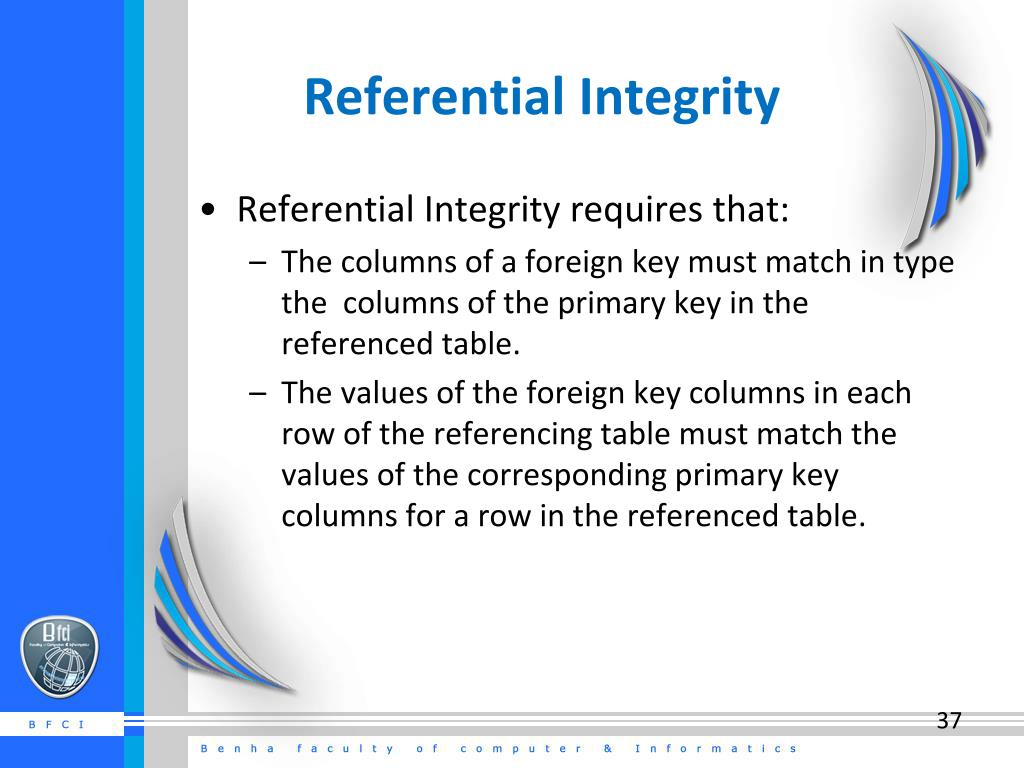

At work, we have much more demand for read than write, so referential integrity seems obvious. The drawbacks of having this on the database side is slower insertion, so you need to weigh up how heavy your application is against reading and writing. Right now, you (presumably) own the management applications, but who is to say that in the future this will still be the case?īy off loading as much validation as you can onto the database, you somewhat future proof your application - at least if someone else tries to develop against your database, more of your assumptions will hold. This is subtle difference, but it's important when you start to consider the future. When such relationships exist and are maintained as they should be, it represents referential integrity of the data.Oh, I most certainly would! What you have to remember is your database is your data store, it is not just the data store for the frontend. Referential integrity: An RDBS needs to maintain and have logical relationships between various tables for it to work efficiently.
#Referential integrity windows#
Usually it represents the Windows Active directory domain which decides users of what domain would be able to access the SQL Server instance. SQL Server administrators usually run SQL Server service using a domain administrator account. Domain: A domain represents typically an organization or an organization might have multiple domains representing different groups under the organization.

Databases are often constructed in the basis of an Entity-relationship diagram. Foreign keys relate data that could be shared or null. Entity: Entity refers to a real world object that might depict a table in an SQL Server database. Referential Integrity: Foreign keys in a database is a second table that can refer to a primary key table within the database. It helps to prevent incorrect records from being added, deleted, or modified. It is important because it ensures that all data in a database remains consistent and up to date. Usually, referential integrity is made up of the combination of a primary key and a foreign key. It is a very useful and important part in RDBMS. Data: Any raw information that needs to be stored in the database for persistence is termed as data. Referential integrity is a term used in database design to describe the relationship between two tables. A REFERENTIAL INTEGRITY is a database concept that is used to build and maintain logical relationships between tables to avoid logical corruption of data.

When one table has a foreign key to another table, the concept of referential integrity states that you may not add a record to the table that contains the foreign key unless there is a corresponding record in the linked table. Define data, entity, domain and referential integrity. Definition: Referential integrity is a database concept that ensures that relationships between tables remain consistent. You can use stored procedure, trigger and functions to create user-defined integrity. It enables you to create business logic which is not possible to develop using system constraints. SQL Server supports four type of data integrity:Įntity Integrity can be enforced through indexes, UNIQUE constraints and PRIMARY KEY constraints.ĭomain integrity validates data for a column of the table.įOREIGN KEY and CHECK constraints are used to enforce Referential Integrity. Is foreign key can be null Short answer: Yes, it can be NULL or duplicate. Data Integrityĭata Integrity validates the data before getting stored in the columns of the table. What is Referential Integrity: A part given by social database organisation structures (RDBMS) that shields customers or appeals from entering clashing data. A referential integrity rule is a rule defined on a key (a column or set of columns) in one table that guarantees that the values in that key match the values in a key in a related table (the referenced value). Define data, entity, domain and referential integrity.


 0 kommentar(er)
0 kommentar(er)
